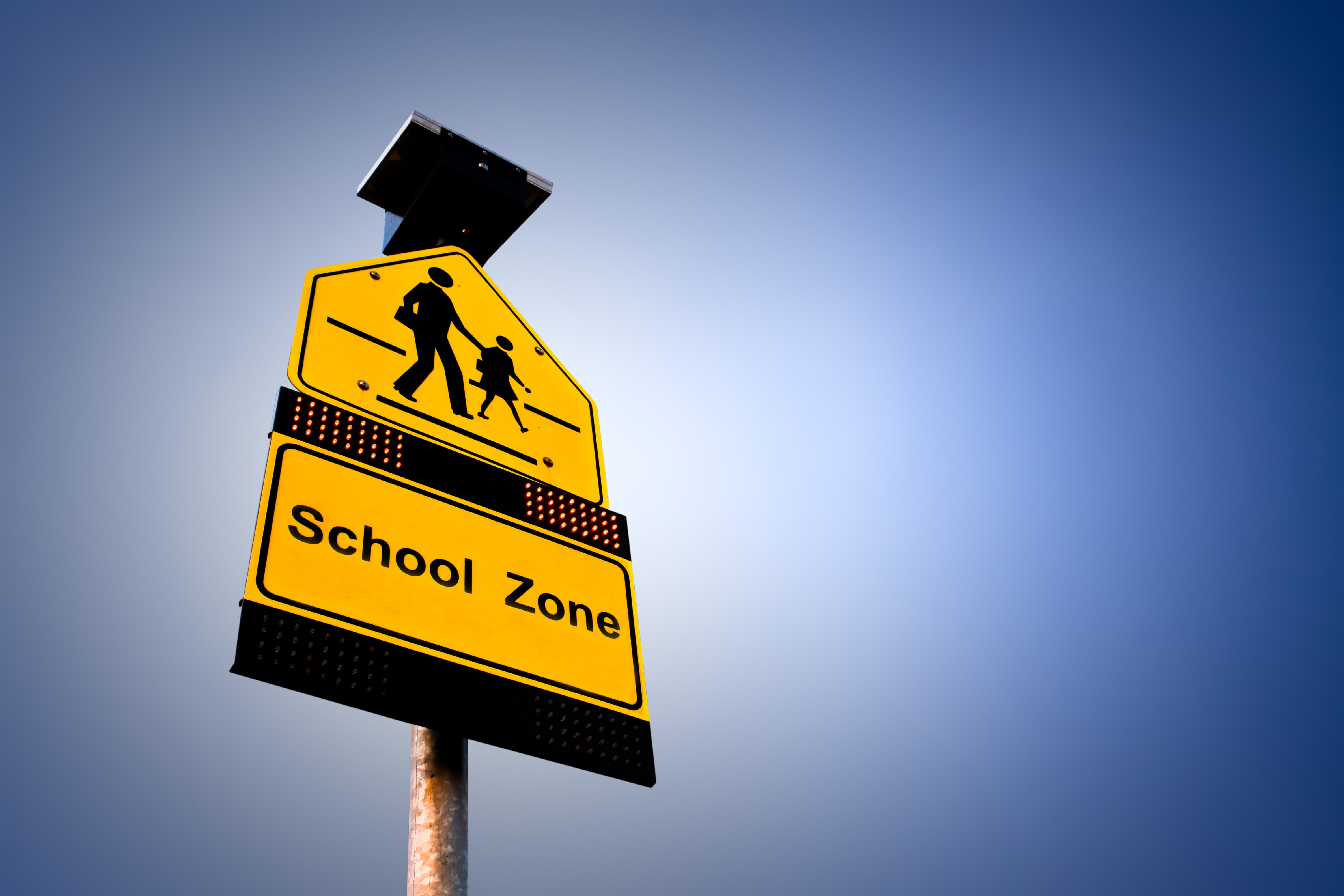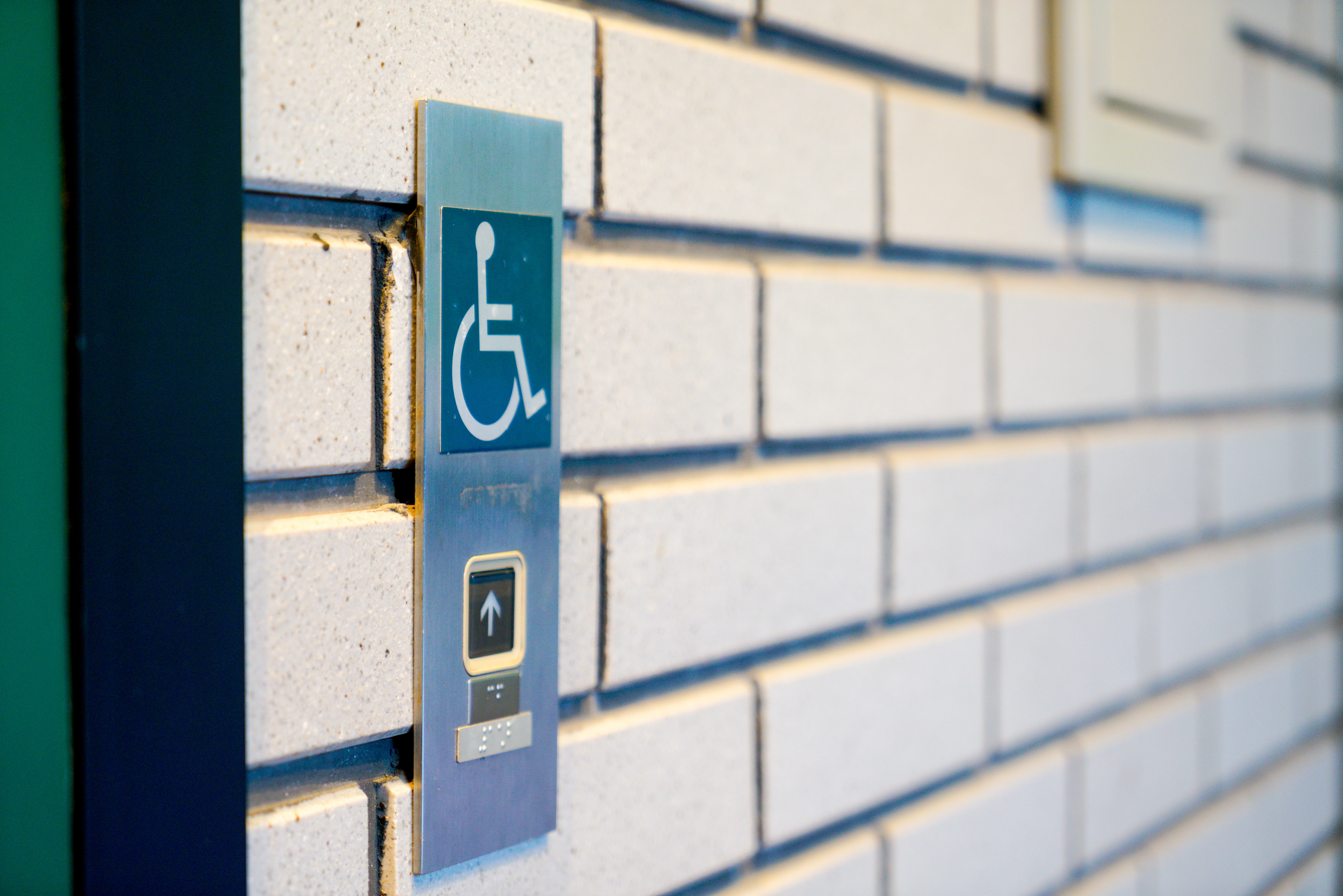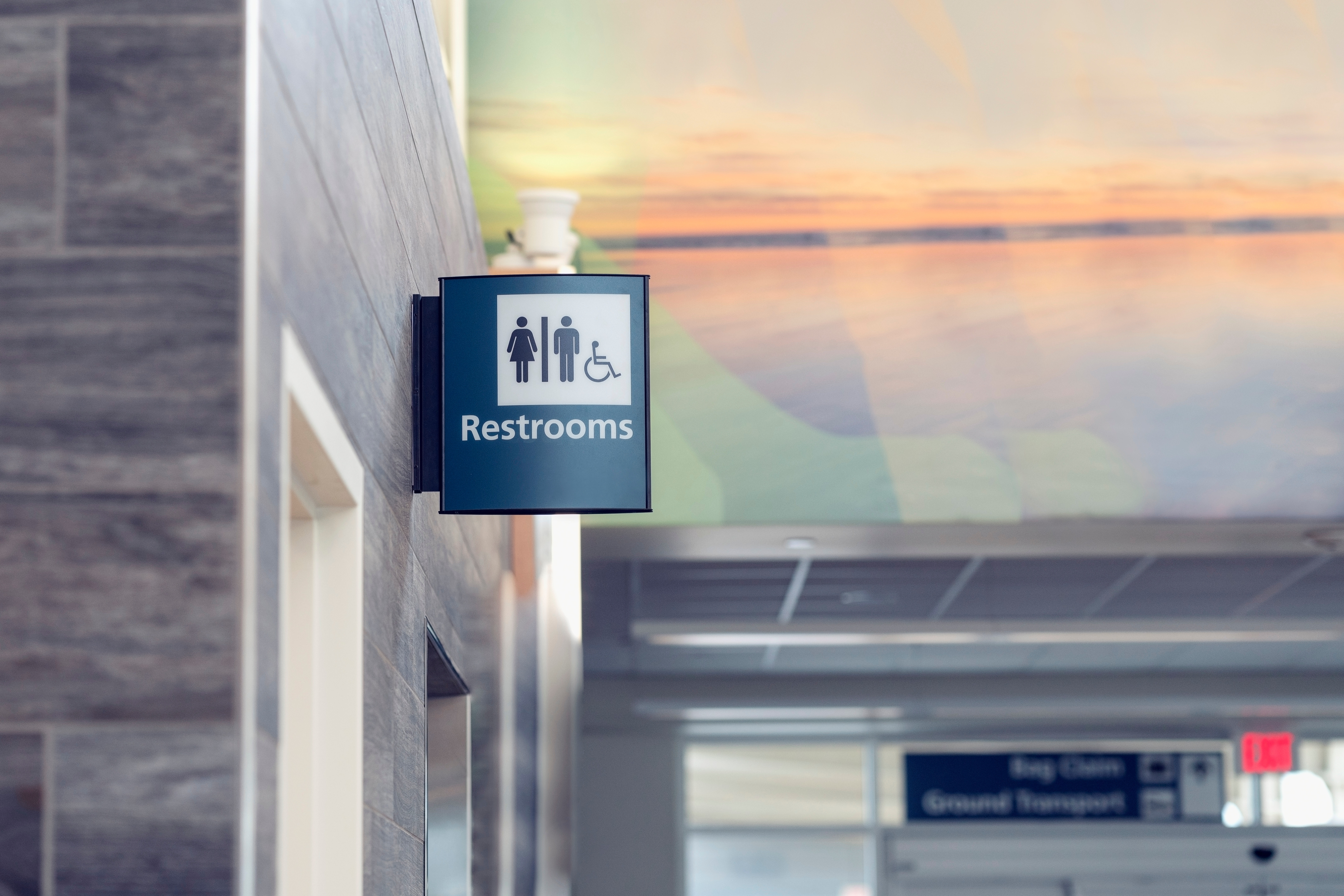
Do Schools & Colleges Need ADA Signage? And If So, Where?
Schools are supposed to be a safe space for children. It’s supposed to be a place where kids are treated equally – where they’re given a fair opportunity, and where they feel included, no matter who they are.
And thanks to the ADA, we’re able to achieve that in schools across the United States.
The Americans with Disabilities Act (ADA) is a one-of-a-kind federal civil rights law – first enacted in July 1990 – that prohibits discrimination against individuals with disabilities in any and all areas of public life.
And yes, that includes employment, transportation, most public spaces, and – of course – education.
That means all public and private schools, colleges, and universities have a set of rules, regulations, and standards to follow – which are designed to ensure inclusivity and accessibility for people of all abilities.
FUN FACT: There are more than 125,000 primary, secondary, and postsecondary schools in the United States today – and they’re responsible for more than 70 million students and nearly four million teachers.

ADA Signage: What Is It & Why Does It Matter?
If you’re just now learning about the ADA, then you might be asking yourself – what is ADA signage?
In its most simplest form, ADA signage refers to any type of sign that’s designed to make it easier for people – especially those with disabilities and impairments – to navigate and enjoy certain public spaces.
These signs are subject to a wide range of regulations that are detailed and monitored by the ADA. For example, ADA compliant signs need to look a certain way, be placed in a certain location, and contain braille letters.
It might sound tedious and pointless, but ADA signage is necessary for a number of reasons – such as:
- It helps remove barriers for people with disabilities.
- It makes it easy to identify and find certain classrooms and areas.
- It makes schools safer and more accessible during an emergency.
- It ensures all students and staff are given a fair and equal opportunity to learn.
- It turns public spaces, such as a school, into functional spaces for those with disabilities.
- It allows students with disabilities to easily and confidently navigate their school.
- It reflects a commitment to diversity, inclusion, and respect for all people, regardless of ability.
And since the ADA is a federal law, failing to comply with these standards and regulations could result in your school, college, or university facing heavy fines, penalties, lawsuits, and a major loss of reputati

Where Do Schools Need ADA Signage?
New research shows that more than 7.5 million children ages 3 to 21 served under the Individuals with Disabilities Education Act (IDEA) during the 2022-2023 school year, accounting for 15% of all students.
Considering that’s the highest number ever recorded in the US, the need for ADA signage in schools is obvious. But the question still remains – where do these ADA signs go? And what should they look like?
To answer that first question – well, to be honest, everywhere.
And to answer that second question – you can leave that to us.
Here at ADA Central, we manufacture ADA signs that are pre-made to meet the latest ADA standards. And while we have an extensive collection for you to choose from, we can also make custom signs, too!
With that said, here are the five most common ADA signs you’ll find in most schools and colleges today.

5. Room Identification Signs
Even the smallest schools are likely to have anywhere from several dozen to several hundred different rooms – including classrooms, auditoriums, janitorial closets, offices, bathrooms, and even the library.
If it’s a permanent room with a permanent purpose, then it needs ADA signage.
In order to comply with ADA standards, it’s important that room signs include tactile text with raised characters and contracted or “Grade 2” braille.
They must be placed outside the room the sign identifies, with the highest tactile character no more than five feet off the clear floor space, and lowest tactile character no more than four feet off the ground.
4. Restroom & Locker Room Signs
Most schools will have anywhere between a couple to more than a dozen bathrooms and locker rooms throughout the premises – and that includes bathrooms by football fields and off-campus buildings.
Much like any other permanent room at the school, restrooms need ADA compliant signage, too.
Restroom signs should include both tactile text and braille signs that read ‘Men,’ ‘Women,’ or ‘Unisex’ to identify the type of restroom it is. It should also have raised tactile characters and pictograms with male, female, or unisex symbols.
3. Accessibility Signage
In a general sense, accessibility signage refers to any sign that specifically designates certain ramps, entrances, and elevators as wheelchair-accessible – and they’re also required in all schools and colleges.
Accessibility signage must include the official "International Symbol of Accessibility" -- as well as other accessible features. Parking signs are also included in this category.
Proper signage ensures that everyone can quickly find exits, accessible routes, and safe areas in an emergency – especially those with physical disabilities that make it difficult to navigate certain areas.
2. Directional and Informational Signs
Informational signs provide general information about a facility, service, or area (such as room capacity and visitor info), while directional signs provide directions to specific locations or areas within a facility.
Both of these types of signs are required under the Americans with Disabilities Act.
And they’re especially important in a school, where some students might not be familiar with certain areas of the building – and where many parents, visitors, guests, and substitutes might need to navigate, too.
1. Elevator and Stairwell Signs
Imagine being in a wheelchair (or being physically unable to walk up or down stairs) and needing to go to the second floor of a building (or any other floor of the building), but not being able to find the elevator.
That would have you feeling a little helpless, wouldn’t it?
That’s why the ADA requires proper signage for all elevators and stairwells – especially those that are only used for emergencies or as fire exits. If these aren’t visible for everyone, lives could be at stake.

ADA Central: Custom ADA Signs for Schools and Colleges
Schools, colleges, universities, and other types of learning centers – especially those that are open to the public – are required to follow the strict standards, regulations, and ADA guidelines outlined inside the ADA.
And that includes making sure they have the necessary ADA signage throughout the facility.
But don’t worry – that’s what ADA Central is here for. With our expertise and knowledge of the ADA, we can help schools across the United States better comply with the ADA – and avoid fines, as a result.
You can check out some of the pre-made designs at our online ADA sign shop, but feel free to contact us if you need custom ADA signage – or if you have a specific and particular order that you need fulfilled.
You can call us at (308) 221-8226 or email us at sales@adacentral.com for immediate assistance.

